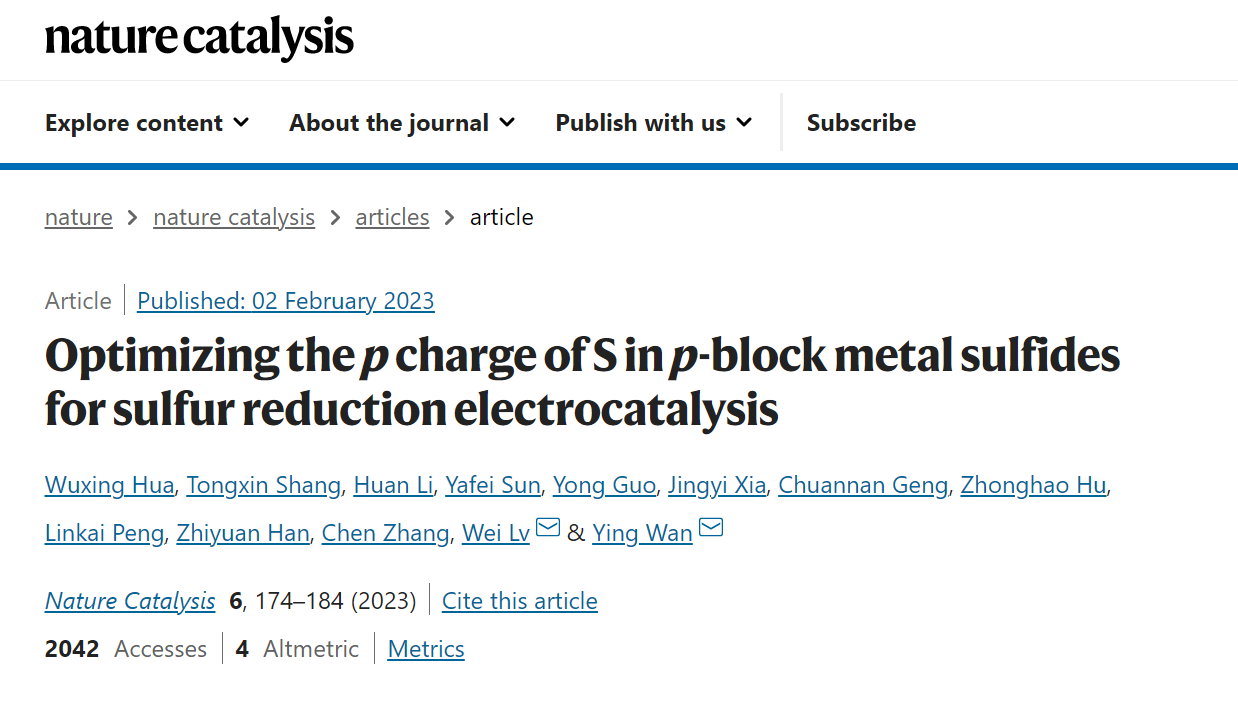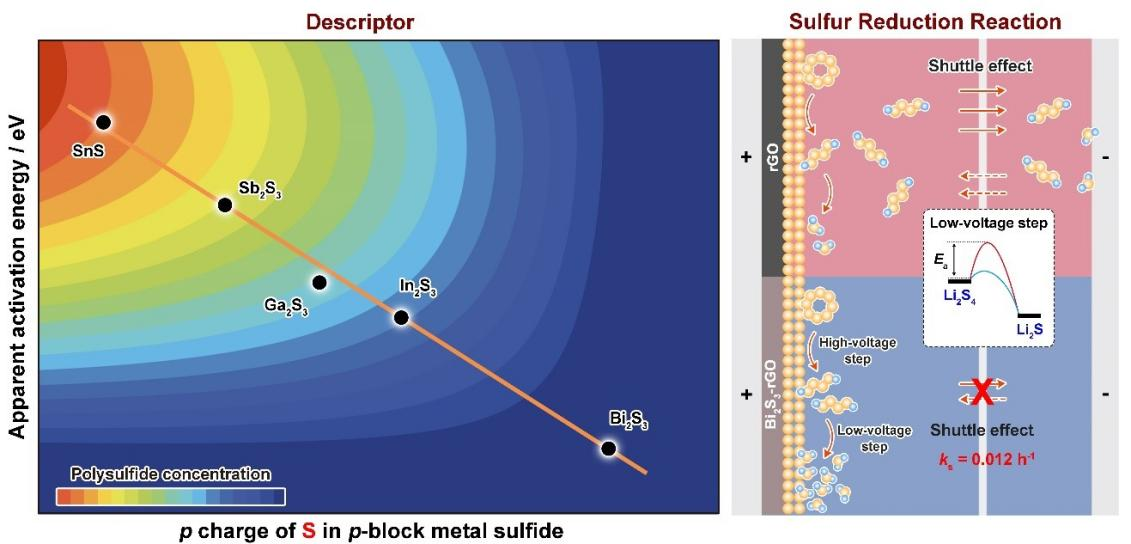
Recently, Dr. Wuxing Hua from the School of Physics and Electronics has made new progress in the study of sulfur reduction electrocatalysis for Li-S batteries. The related paper, entitled "Optimizing the p charge of S in p-block metal sulfides for sulfur reduction electrocatalysis", has been published in the journal of Nature Catalysis (https://doi.org/10.1038/s41929-023-00912-9). Wuxing Hua, Tongxin Shang, Huan Li, Yafei Sun are the Co-first authors, Prof. Wei Lv from Tsinghua Shenzhen International Graduate School, Tsinghua University and Prof. Ying Wan from Shanghai Normal University are the corresponding authors.

Figure 1. Descriptor for screening efficient catalysts to inhibit the shuttle effect in Li-S batteries.
Understanding sulfur conversion chemistry is key to the development of sulfur-based high-energy-density batteries. However, unclear relationships between the electronic structure of the catalyst and its activity are the major problem. Here, the authors provide a direct correlation between the p electron gain of S in p-block metal sulfdes and the apparent activation energies (Ea) for the sulfur reduction reaction (SRR), in particular, Li2Sn to Li2S conversion, which is the rate-determining step of the SRR. The maximum p charge occurs in bismuth sulfde and results in the lowest Ea and a high SRR rate in the cathode. Li–S batteries with the Bi2S3 catalyst work steadily at a high rate of 5.0 C with a high-capacity retention of ~85% after 500 cycles. A high areal capacity of ~21.9 mAh cm−2 was obtained under a high sulfur loading of 17.6 mg cm−2 but a low electrolyte/sulfur ratio of 7.5 μl mg−1. This work opens a way to the rational design of efficient electrocatalysts, which holds great promise for the development of practical Li-S batteries.
The research work is supported by the National Key R&D Program of China, National Natural Science Foundation of China and Innovation Program of the Shanghai Municipal Education Commission.
Link to this paper: https://www.nature.com/articles/s41929-023-00912-9

 Research /
Research Achievements /
Science & Technology /
School of Physics and Electronics /
Content
Research /
Research Achievements /
Science & Technology /
School of Physics and Electronics /
Content


